31 UMMA Objects
31 UMMA Objects

Yokoi Kinkoku (Japanese (culture or style))
Portrait of the Poet 'Basho'
1767 – 1832
Museum purchase made possible by the Margaret Watson Parker Art Collection Fund
1968/2.22
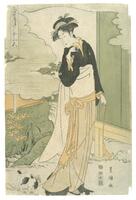
Utagawa Toyokuni I (Japanese (culture or style))
A Modern Sannomiya: Maid and Cat
1767 – 1832
Museum Purchase
1960/1.164

Yokoya Kinkoku
Seated Female Figure with Parcel
1767 – 1832
Gift of the Estate of Betty I. Monroe, PhD
2014/2.251
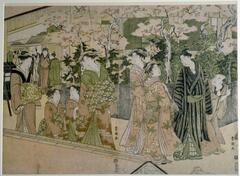
Utagawa Toyokuni I (Japanese (culture or style))
A Courtesan followed by Two kamuro and Another Courtesan Behind, Sheet 5 from the series of "The Main Street of the Yoshiwara in Cherry Blossom Time" (a five sheet series)
1767 – 1832
Bequest of Margaret Watson Parker
1948/1.179

Japanese (Japanese (culture or style))
Netsuke of sleeping sarumawashi (monkey-trainer) with a monkey on his back
1767 – 1832
Gift of the William T. and Dora G. Hunter Collection
2002/2.38
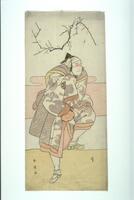
Katsukawa Shun'ei (Japanese (culture or style))
Actor with Drum
1767 – 1832
Museum Purchase
1960/1.158

Yamaoka Geppō
Blue and Green Landscape, with inscription by Murase Kôtei
1767 – 1832
Museum purchase made possible by the Margaret Watson Parker Art Collection Fund
1985/2.24

Utagawa Toyokuni I (Japanese (culture or style))
Two Courtesans with a Companion and Two kamuro, Sheet 3 from the series of "The Main Street of the Yoshiwara in Cherry Blossom Time" (A five-sheet series)
1767 – 1832
Bequest of Margaret Watson Parker
1948/1.177
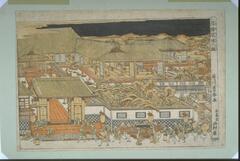
Utagawa Toyoharu (Japanese (culture or style))
The Rat's Wedding
1767 – 1832
Museum Purchase
1960/1.162

Utagawa Toyokuni I (Japanese (culture or style))
Two Courtesans Talking to a Young Man, Sheet 4 from the series of "The Main Street of the Yoshiwara in Cherry Blossom Time" (a five sheet series)
1767 – 1832
Bequest of Margaret Watson Parker
1948/1.178

Utagawa Toyokuni I (Japanese (culture or style))
Two Women in a Dancing Act, One Dressed as a Nobleman's Servant, the Other Kneeling Playing a Drum
1767 – 1832
Bequest of Margaret Watson Parker
1948/1.175
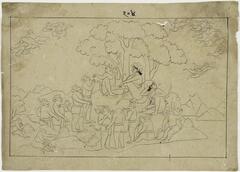
Indian (Indian (South Asian))
Drawing for a Ramayana series: Rama, Lakshmana and Sugriva in conference (fol. 204)
1767 – 1832
Gift of Dr. and Mrs. Leo S. Figiel and Dr. and Mrs. Steven J. Figiel.
1975/2.149
Loading…
